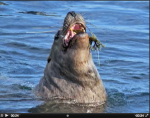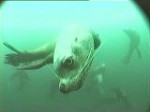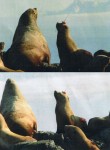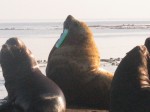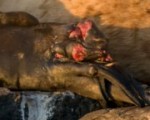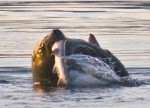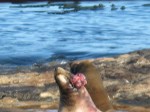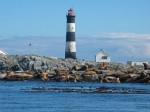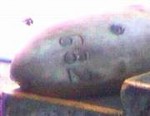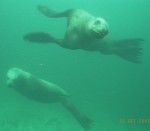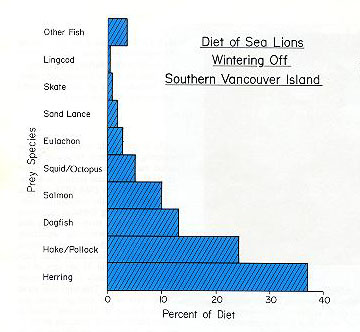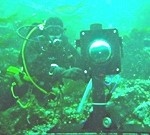As Ecological Reserve Warden, I was concerned with the report of continued blasting by the DND given the recent noting of a nursing northern sea lion at Race Rocks. The following is an account of the concern, starting with an e-mail and pictures from the Ecoguardian, Ryan Murphy
Subject “New Development”
Sept 27,2011
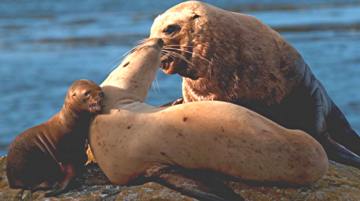 “I’m not sure if the LGL guys noticed this or not… but we have a nursing Steller sea lion pup on Great Race. You’ll see in the photos that the mother is definitely lactating and the pup is nursing on the rock above the jetty (West side). Since Eumetopias jubatus is listed under SARA as Special Concern, I believe this is very significant. DND’s activity at Bentinck Island has not included intervals between blasts to reduce sea lion stampedes, and this pup is definitely at risk of trampling if DND continues their activities as they have for the past 2 days.-
“I’m not sure if the LGL guys noticed this or not… but we have a nursing Steller sea lion pup on Great Race. You’ll see in the photos that the mother is definitely lactating and the pup is nursing on the rock above the jetty (West side). Since Eumetopias jubatus is listed under SARA as Special Concern, I believe this is very significant. DND’s activity at Bentinck Island has not included intervals between blasts to reduce sea lion stampedes, and this pup is definitely at risk of trampling if DND continues their activities as they have for the past 2 days.-
Subject: continued blasting
Date: September 28, 2011 8:30:18 AM PDT
“No need to worry about DND blasting, the landing of LGL personnel and subsequent standing around at the jetty caused a mass stampede with about 50 animals taking to the water including the pup.”
Subject Update
Date: September 28, 2011 9:26:18 AM PDT
“Just so you know, the larger blasts are still coming back to back. I don’t know if LGL communicated the need for increased intervals, but regardless there is no change. The sea lions continued to be disturbed and take to the water with the rapid succession blasts.”
Subject: update
Date: September 28, 2011 4:57:03 PM PDT
“The pup has been back since at least 14:30. I have not seen its mother and it is sporting a fresh 2″ cut on its shoulder. Otherwise looks to be ok, it has been sitting upright trying to stay awake and nodding off as babies will.”
Subject: Re: New development
Date: September 29, 2011 7:04:02 AM PDT
“The pup is still here this morning, the mother is not with it.”
Subject: DND report
Date: September 29, 2011 9:21:24 AM PDT
“As per the log at 9:21 this morning:
Two absolutely massive explosions that shook the house occurred only 10 seconds apart. The glass panes in the windows rattled against their metallic frames. At least 70 sea lions stampeded into the water, completely clearing out entire haul out areas. About 20 sea lions stampeded through the area where the Steller pup was resting.”
As a result of this account of events, I sent an e-mail to BC Parks and DND administration stating the following:
From: Garry Fletcher
Sent: Thursday, September 29, 2011 10:20 AM
Subject: Fwd: New development
I was very concerned to receive the following reports and images from Ryan Murphy our Guardian at Race Rocks. I think it warrants a followup considering the concerns we have for marine mammals being disturbed by human activities, especially those which are SARA listed.
Surely they have enough data by now to show that the window for doing this blasting program might perhaps be reconsidered. We would appreciate hearing of any followup .
FOLLOWUP: So far ( November, 2011) there has been none. The juvenile and mother were not seen again, research by LGL (LGL who are referred to are the DND contracted research group who is at the island again this year to make observations on the effects of detonations at Bentinck Island.) The disturbance to animals by DND blasting continued unabated over the next few days. Their previous reports up to 2010 are included here. The report for this year will be added here when it is available.

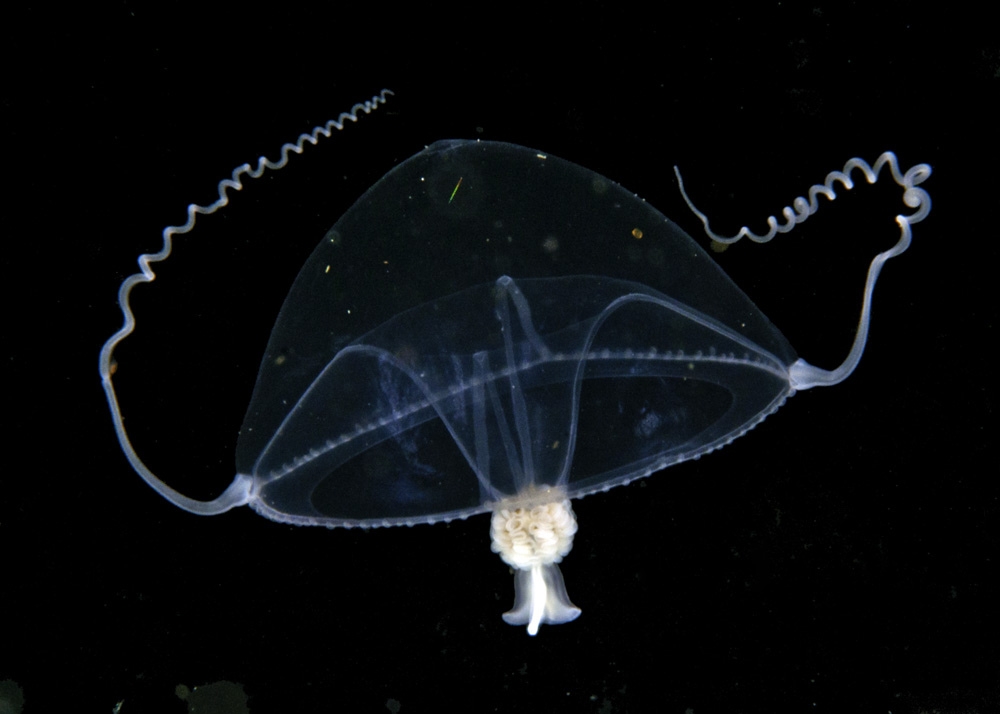
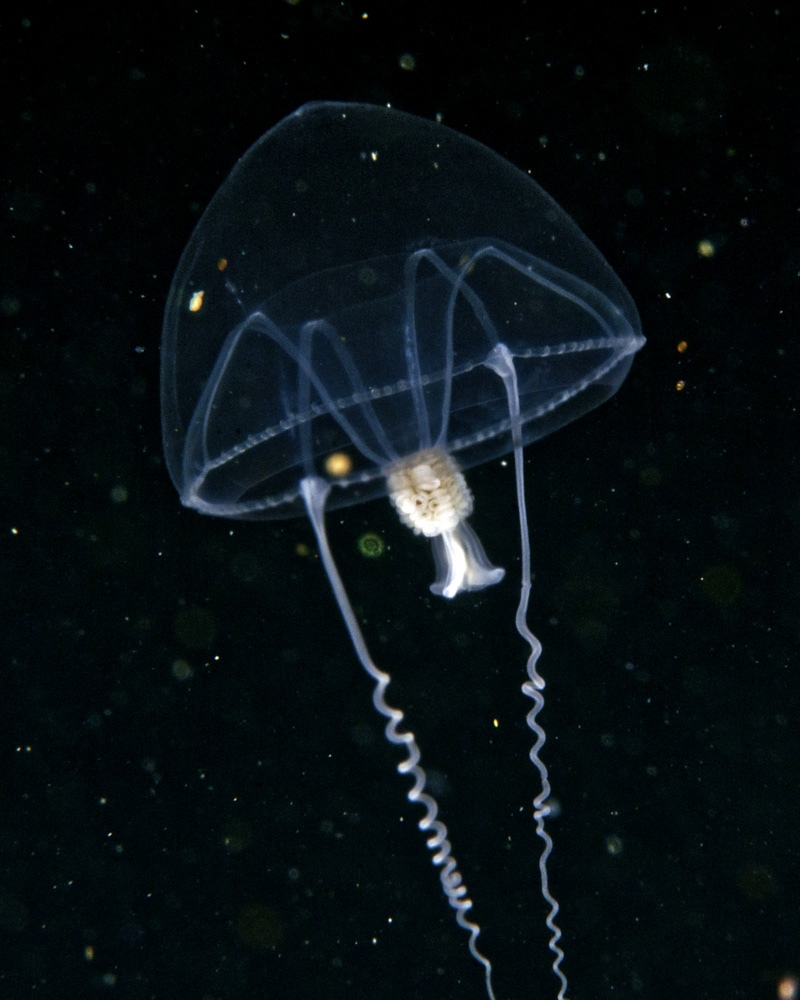

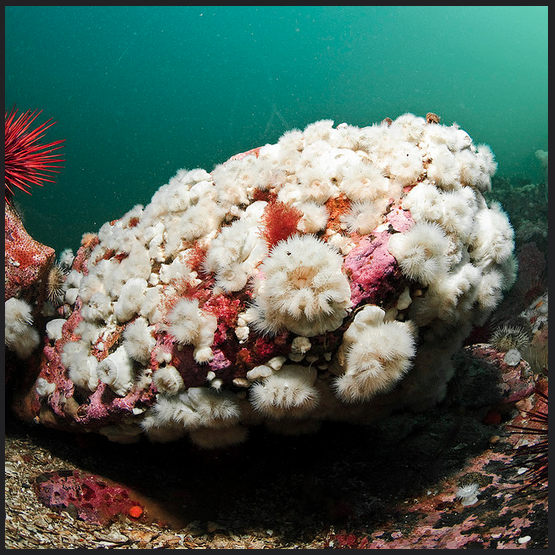

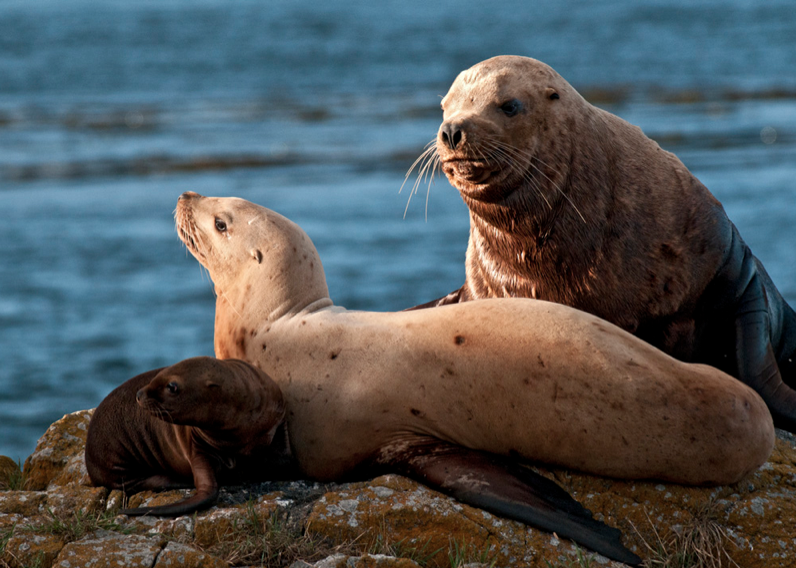
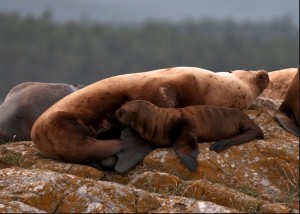
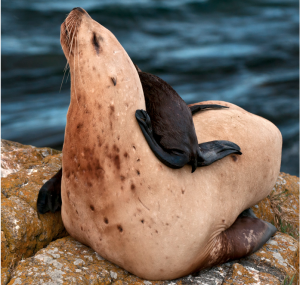
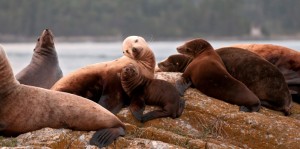
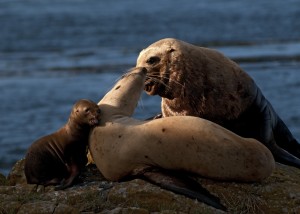
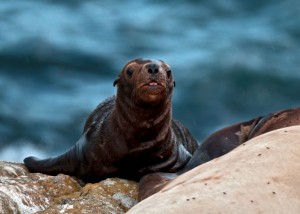
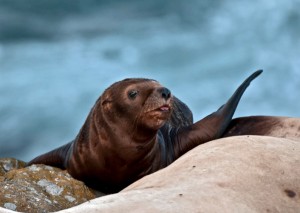 repeated stampedes of sea lions and this pup may be crushed tomorrow.”
repeated stampedes of sea lions and this pup may be crushed tomorrow.” 

